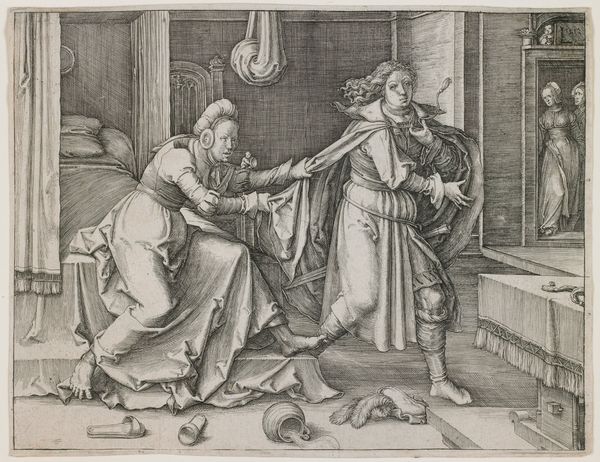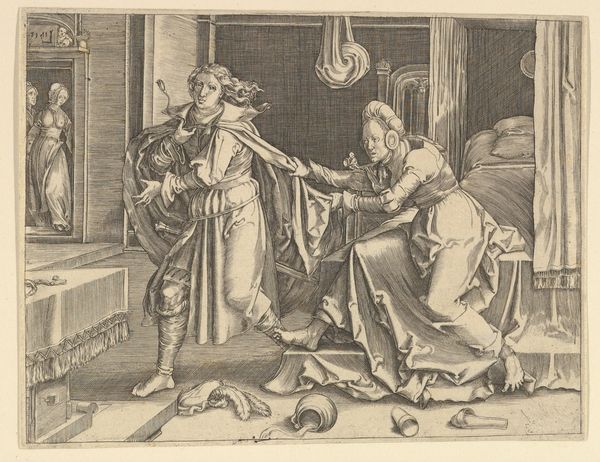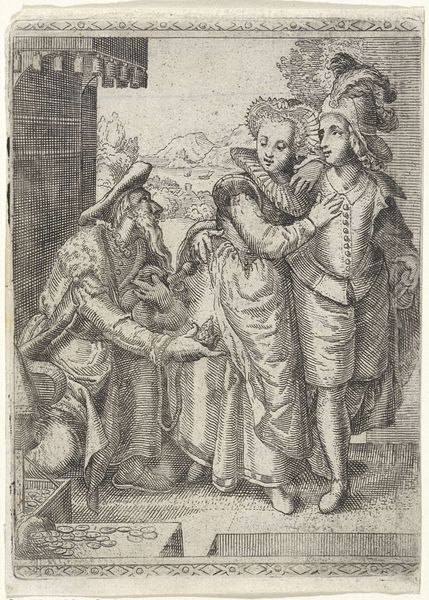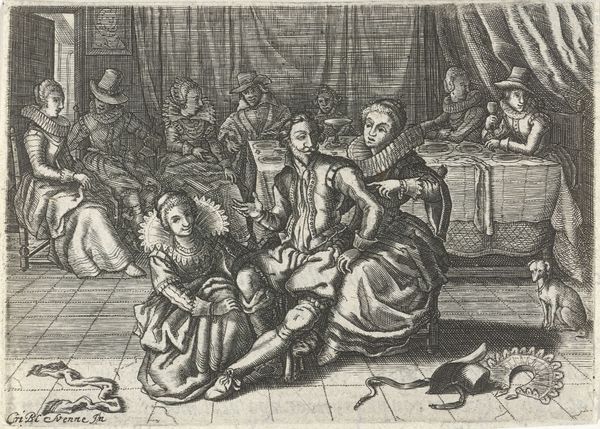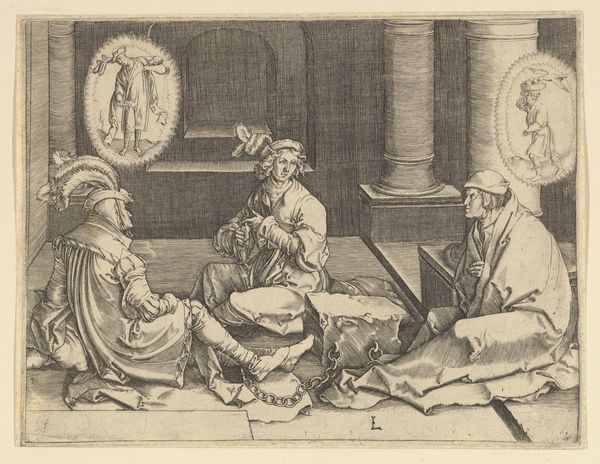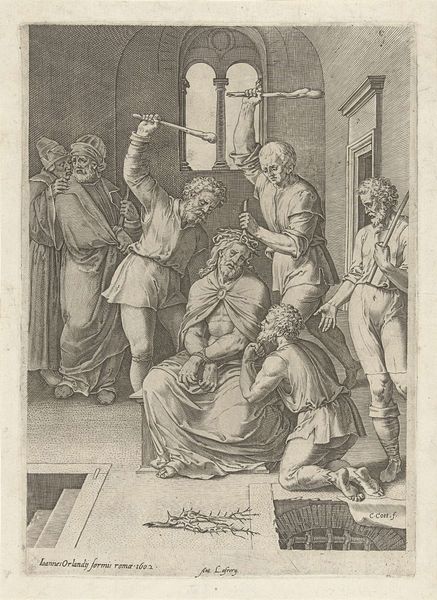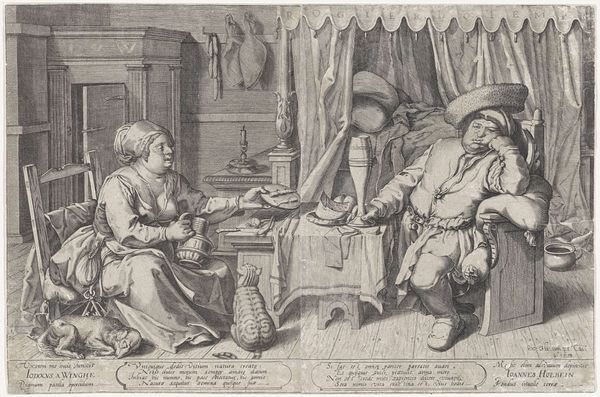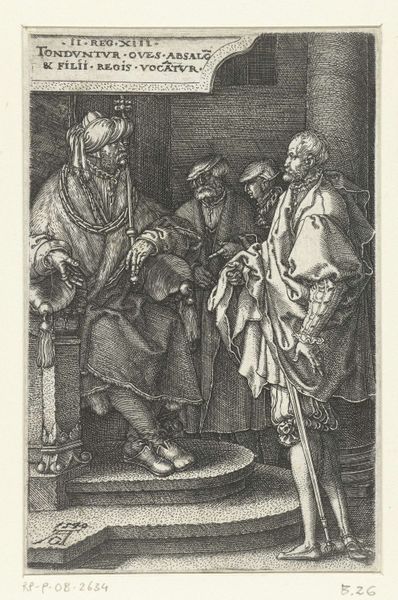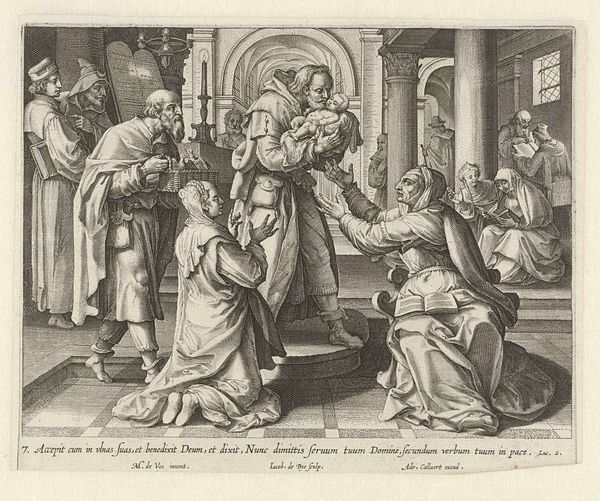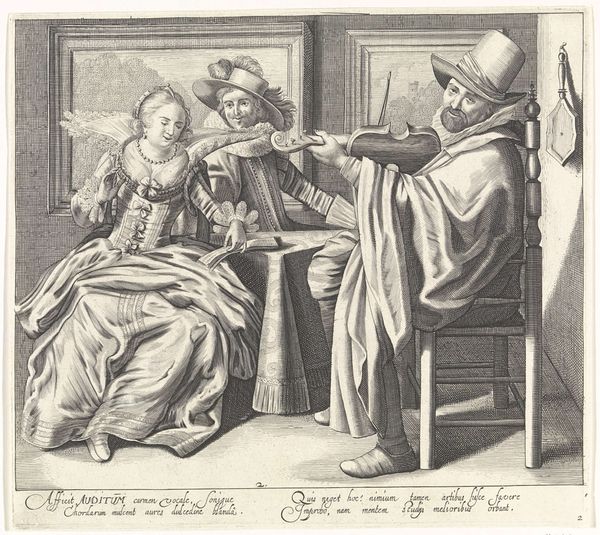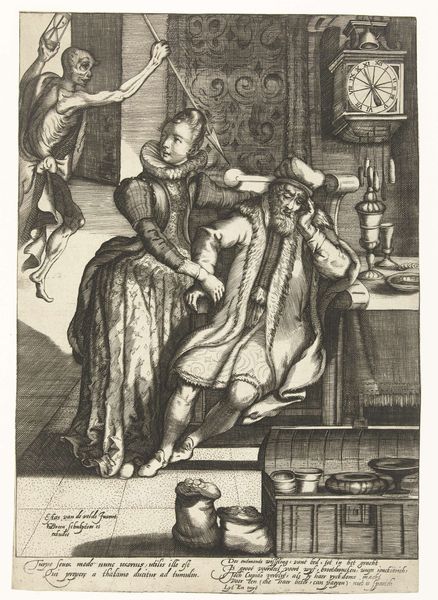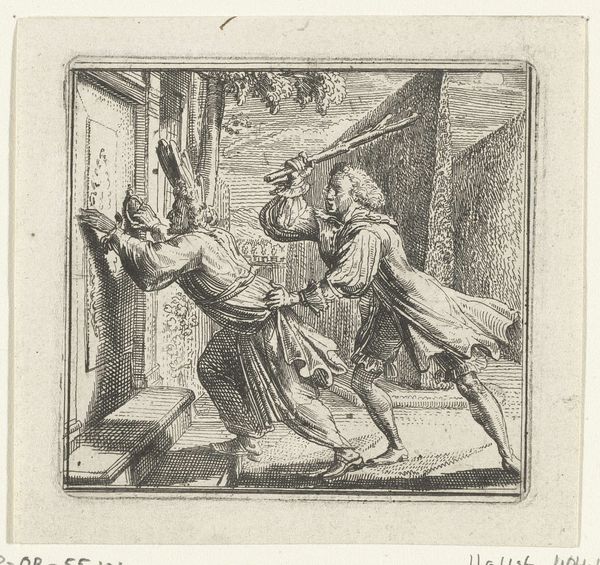
print, engraving
#
narrative-art
# print
#
figuration
#
line
#
history-painting
#
northern-renaissance
#
engraving
Dimensions: height 125 mm, width 162 mm
Copyright: Rijks Museum: Open Domain
Curator: Here we see "Joseph Flees Potiphar's Wife," a 1512 engraving by Lucas van Leyden, housed right here at the Rijksmuseum. Editor: It’s quite a dynamic scene! The fleeing figure, the grasping woman—you immediately sense the drama unfolding. The dense crosshatching definitely contributes to a feeling of urgency. Curator: Absolutely. Van Leyden, situated in the Northern Renaissance, really excels at capturing movement through line alone. The historical context is vital here. The story, derived from the Book of Genesis, raises compelling questions about power, sexual coercion, and virtue. Potiphar's wife, a figure of considerable authority, attempts to seduce Joseph, a foreign servant, and when rejected, accuses him of assault. Editor: And considering this is an engraving, the material choices and techniques must have presented quite a challenge. The detail, especially in the garments and facial expressions, required a mastery of the burin and printing process. One wonders about the labor involved in creating this many multiples and how it functioned within the context of early 16th century print culture. Curator: Indeed, that distribution is central to its impact. As a print, its reach extended far beyond a single wealthy patron, disseminating moral lessons – though we should unpack whose morals are being reinforced, shouldn't we? The vulnerability of Joseph, caught in a web of deceit and power imbalances, speaks to larger questions about the precariousness of social mobility and gendered expectations. Editor: I’m struck by the items discarded on the floor. A spilled container, slippers, perhaps suggesting a disruption, even violence that interrupts the expected labor of domesticity, even gendered behavior. This material culture supports the main story. Curator: That material context enriches our understanding of the social and ethical codes at play during the Renaissance, definitely offering points of reflection on historical versus contemporary views on consent and power dynamics. Editor: It really demonstrates how deeply intertwined themes of morality, material conditions, and skilled craftmanship are during this period, making it relevant for discussions today. Curator: Absolutely. Studying Lucas van Leyden's process while considering Joseph's challenging position, gives this piece continuing relevance, especially within ongoing cultural discussions around social justice. Editor: Yes, by looking into these tangible, technical aspects of this artwork as a product of skilled hand labor and how they interact and overlap with the broader issues is crucial to see the lasting impacts today.
Comments
No comments
Be the first to comment and join the conversation on the ultimate creative platform.
